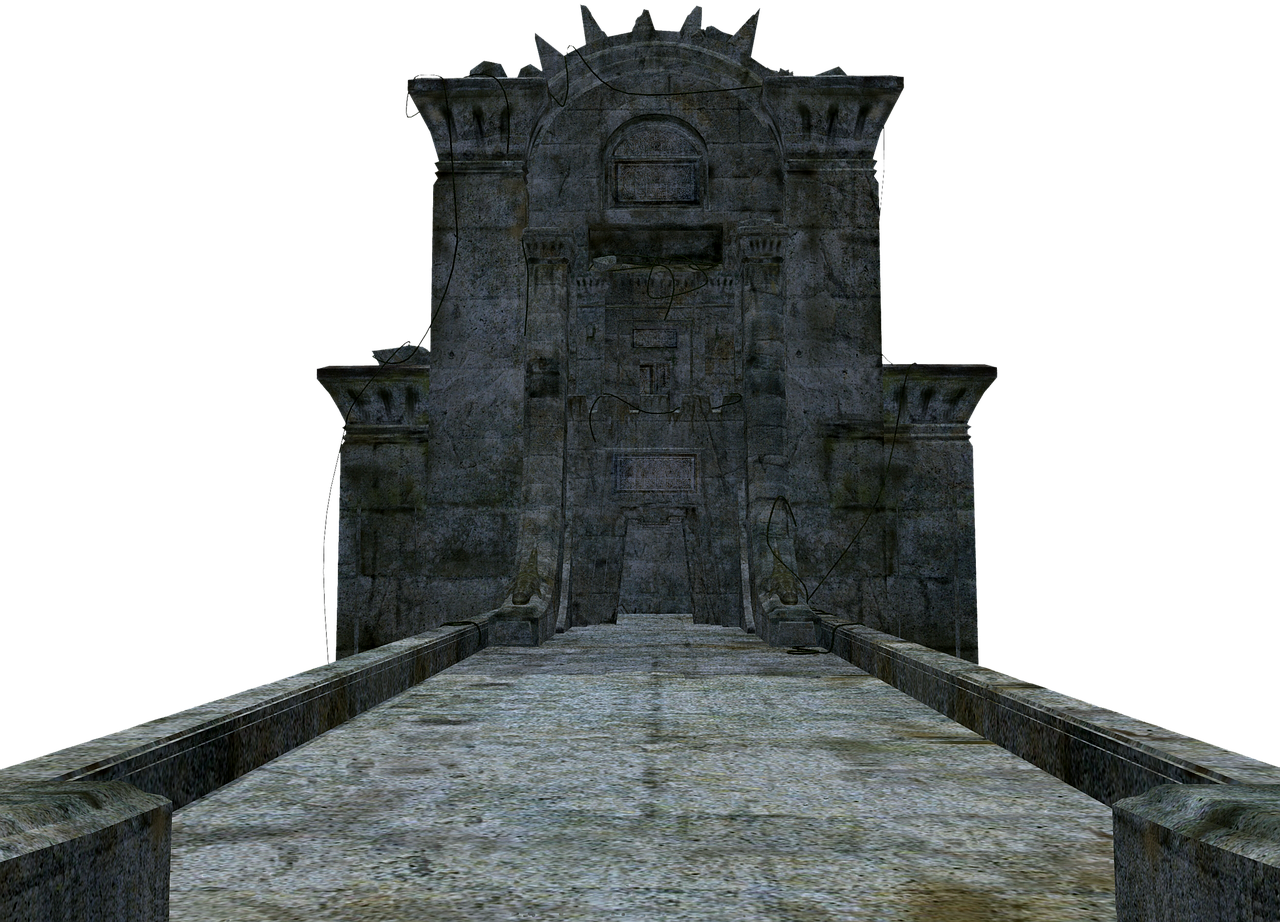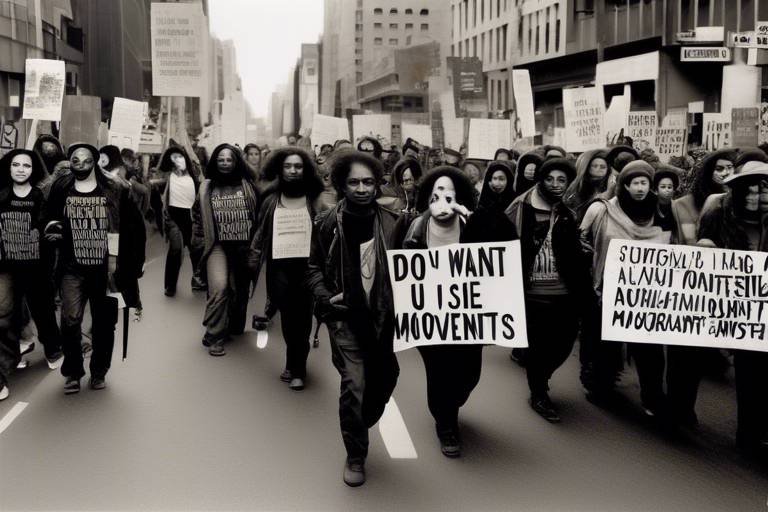The Rise of Feudalism in Medieval Europe
Exploring the evolution of feudalism in medieval Europe reveals a fascinating journey through time, where power, loyalty, and hierarchy intertwined to shape the social fabric of the era. As feudalism emerged, it brought with it a complex system of relationships that defined the roles of individuals within society and laid the foundation for the political landscape of the time.

Origins of Feudalism
Exploring the evolution of feudalism in medieval Europe, its social structure, economic impact, and the role of feudal lords and vassals in shaping the political landscape of the time.
Understanding the historical context that led to the development of feudalism in medieval Europe and the factors that contributed to its rise as a dominant social system.
Feudalism in medieval Europe emerged as a response to the chaotic and turbulent times following the collapse of the Roman Empire. With the weakening of central authority, local lords and nobles took on more prominent roles in governing their territories. This decentralization of power paved the way for the feudal system to take root, where land was the primary source of wealth and influence.
The origins of feudalism can be traced back to the need for security and protection in a time of constant warfare and invasions. Lords granted land to vassals in exchange for military service and loyalty, creating a system of mutual obligations that formed the basis of feudal relationships.
Additionally, the hierarchical structure of feudalism was influenced by the social norms and customs of the time, where status and power were closely tied to land ownership. This system of land tenure and hierarchical relationships laid the foundation for the feudal society that dominated medieval Europe.
As feudalism spread across Europe, it became deeply ingrained in the social, economic, and political fabric of the continent, shaping the relationships between individuals and institutions for centuries to come.
- What were the main characteristics of feudalism?
- How did feudalism impact medieval society?
- Why did feudalism decline?
Feudalism was characterized by a hierarchical social structure, where land was the primary source of wealth and power. Lords granted land to vassals in exchange for military service and loyalty.
Feudalism shaped the relationships between different social classes, with clear distinctions between nobles, knights, and peasants. It also influenced economic systems and the organization of military forces.
Feudalism declined due to various factors, including the rise of centralized monarchies, the impact of the Black Death, and the emergence of capitalist economies that challenged the feudal system.

Feudal Hierarchy
Feudal hierarchy in medieval Europe was a complex social structure that defined the relationships and power dynamics among different classes. At the top of the hierarchy were the kings, who held ultimate authority and granted land to nobles in exchange for loyalty and military service. The nobles, or lords, were powerful landowners who controlled vast estates and ruled over vassals. Knights, as the warrior class, served the nobles in exchange for land and protection. Peasants, at the bottom of the hierarchy, worked the land and provided agricultural produce to the lords in return for shelter and security.
This hierarchical system was characterized by the flow of obligations and responsibilities from the top down. Kings relied on the support of nobles to maintain order and defend the realm, while nobles depended on knights for military service and protection. In turn, knights protected the lands of the nobles and peasants, who worked the land to sustain the entire system.
One key aspect of feudal hierarchy was the concept of land ownership and control. Land was the primary source of wealth and power, and the distribution of land determined one's position in society. Nobles held large estates granted by the king, which they managed through a network of vassals and serfs. Knights received smaller parcels of land from the nobles in exchange for military service, while peasants worked the land under the supervision of the lords.
Power and authority in the feudal hierarchy were not solely based on wealth or birthright but also on the fulfillment of obligations and loyalty. Vassals swore oaths of fealty to their lords, pledging to serve them in times of need and uphold the values of chivalry. This system of reciprocal relationships formed the backbone of medieval society, ensuring order and stability amidst the constant threat of internal and external conflicts.

Roles of Feudal Lords
Feudal lords played a pivotal role in the hierarchical structure of medieval Europe, holding significant power and influence over the lands they controlled. These lords were typically granted large estates by the monarch in exchange for military service and loyalty. Their primary responsibility was to maintain law and order within their domain, ensuring the protection and well-being of their subjects.
One of the key functions of feudal lords was the administration of justice, settling disputes among their vassals and ensuring that the feudal contract was upheld. They also had the authority to collect taxes, levy tolls, and raise armies in times of conflict. In return for their services, feudal lords received homage and fealty from their vassals, who swore allegiance to them in exchange for land and protection.
Feudal lords held immense power over the economic activities within their territories, overseeing agricultural production, trade, and commerce. They controlled the distribution of resources and wealth, often accumulating vast fortunes through the labor of their peasants. Additionally, lords were responsible for the construction and maintenance of castles, fortifications, and other infrastructure essential for defense and governance.
Furthermore, feudal lords were expected to participate in feudal ceremonies and rituals, demonstrating their status and authority within the social hierarchy. They often engaged in tournaments, hunts, and other displays of chivalry to showcase their prowess and leadership skills. The feudal system relied heavily on the prestige and reputation of these lords to maintain stability and order.

Life of Vassals
Within the feudal system of medieval Europe, vassals played a crucial role in sustaining the social hierarchy. These individuals, often knights or lesser nobles, held a unique position in society, serving a lord in exchange for protection and land. The life of a vassal was characterized by a complex web of obligations and duties, shaping their daily existence and defining their place in the feudal order.
One of the primary responsibilities of vassals was to provide military service to their lord in times of conflict. This duty was central to the feudal contract, as vassals pledged their loyalty and service in exchange for land tenure. In addition to military obligations, vassals were also expected to offer counsel and support to their lord, participating in decision-making processes and assisting in governance.
Furthermore, the land granted to vassals, known as a fief, was central to their livelihood. Vassals were tasked with managing and cultivating the land, overseeing agricultural production, and ensuring the economic prosperity of their holdings. This agricultural labor formed the backbone of the feudal economy, providing sustenance for both the vassal and their lord.
Despite their important role within the feudal system, vassals faced numerous challenges in their daily lives. The precarious nature of medieval society meant that vassals were often subject to the whims of their lords, with their security and well-being dependent on the strength of their feudal relationships. Additionally, vassals had limited autonomy and freedom, bound by strict feudal customs and obligations that dictated their actions and decisions.

Feudal Economy
Feudal economy in medieval Europe was primarily based on the manorial system, which formed the backbone of agricultural production and economic exchange within the feudal framework. The feudal economy revolved around the manor, a self-sufficient estate controlled by a lord, where peasants worked the land in exchange for protection and a share of the harvest. This system ensured a steady agricultural output to sustain the feudal society.
Within the manorial system, the lord held significant power over the distribution of land and resources, dictating the production quotas and overseeing the labor of the peasants. The manor served as the economic hub where goods were produced, traded, and consumed, creating a closed economic circuit that sustained the feudal hierarchy.
Trade and commerce were limited within the feudal economy, as most transactions occurred locally between the lord's manor and nearby villages. Barter was a common practice, where goods and services were exchanged without the need for currency. This localized economic structure contributed to the self-sufficiency of manors and reduced reliance on external markets.
The feudal economy also relied on the concept of feudal dues, where peasants were obligated to provide labor, goods, or payments to their lord as part of their feudal obligations. These dues varied depending on the specific terms of the feudal contract, with peasants contributing a portion of their produce or working days to support the lord's household.
Despite its limitations in terms of economic growth and innovation, the feudal economy provided stability and security within the medieval society. The manorial system ensured a reliable food supply, protection from external threats, and a clear social structure that governed economic relationships between lords, vassals, and peasants.

Feudalism and Warfare
Feudalism in medieval Europe was intricately linked with the concept of warfare, shaping the political landscape and power dynamics of the time. Knights, the armored warriors of the feudal system, played a crucial role in battles, showcasing their military prowess and loyalty to their lords. The feudal structure relied heavily on the military service provided by knights, who were bound by oaths of fealty to fight for their lords when called upon.
Chivalry, the code of conduct followed by knights, emphasized virtues such as honor, bravery, and loyalty on the battlefield. This code not only dictated how knights should behave in combat but also influenced the relationships between lords and vassals, creating a sense of camaraderie and mutual respect within the feudal hierarchy.
Warfare between feudal lords was a common occurrence, driven by territorial disputes, quest for power, and the desire to expand influence. These conflicts often resulted in battles that showcased the military might of knights and the strategic prowess of feudal lords. The outcomes of these battles could shift the balance of power within the feudal system, leading to changes in land ownership and political alliances.
Moreover, the interconnected nature of feudal relationships meant that conflicts between lords could have far-reaching consequences, impacting not only the immediate parties involved but also their vassals and the broader feudal society. Feudalism and warfare were deeply intertwined, with battles serving as a means for lords to assert dominance, resolve disputes, and solidify their positions within the feudal hierarchy.

Decline of Feudalism
As the medieval period progressed, several factors contributed to the eventual decline of feudalism in Europe. One significant factor was the rise of centralized monarchies, where kings sought to consolidate power and reduce the influence of feudal lords. This shift in power dynamics weakened the feudal system as monarchs established stronger control over their territories, diminishing the authority of the nobility.
Another key event that hastened the decline of feudalism was the devastating impact of the Black Death in the 14th century. The widespread epidemic led to a significant decrease in the population, resulting in labor shortages and a shift in the balance of power between lords and peasants. The scarcity of labor gave peasants more bargaining power and freedom to seek better conditions, challenging the traditional feudal relationships.
Furthermore, the emergence of capitalist economic practices also played a role in the decline of feudalism. As trade and commerce expanded, a new class of wealthy merchants and entrepreneurs emerged, challenging the feudal economic structure based on land ownership and agricultural production. The growth of capitalism provided alternative economic opportunities outside the feudal system, leading to a gradual erosion of feudal institutions.
Additionally, internal conflicts among feudal lords and external invasions further weakened the feudal system. Continuous power struggles and territorial disputes among nobles destabilized the social order, while invasions by outside forces introduced new challenges to the existing feudal hierarchy. These conflicts highlighted the limitations of feudalism in providing security and stability in an evolving political landscape.
In conclusion, the decline of feudalism in Europe was a complex process influenced by various social, economic, and political factors. The shift towards centralized monarchies, the impact of the Black Death, the rise of capitalism, and internal conflicts among feudal lords all contributed to the gradual dismantling of the feudal system, marking the end of an era and paving the way for new forms of governance and social organization.

Legacy of Feudalism
Feudalism, with its intricate web of relationships and power dynamics, left a lasting legacy on medieval Europe that continues to influence modern society in various ways. The feudal system, characterized by hierarchical structures and obligations, shaped not only the political landscape but also the cultural and economic development of Europe.
One of the most significant legacies of feudalism is the establishment of a structured social order that defined the roles and responsibilities of individuals based on their position in society. This hierarchical system laid the foundation for future social structures and class distinctions, influencing the development of modern institutions and governance systems.
Furthermore, the feudal economy, centered around agricultural production and the exchange of goods and services, contributed to the economic foundations of Europe. The manorial system, where peasants worked the land in exchange for protection and resources, established patterns of land ownership and labor that persisted long after the decline of feudalism.
The legacy of feudalism also extends to the realm of warfare and chivalry. The code of chivalry, which emphasized honor, loyalty, and bravery, originated in the feudal society and influenced the conduct of knights in battle. The feudal system's reliance on military service and loyalty to lords shaped the martial traditions of Europe for centuries to come.
Moreover, the remnants of feudalism can still be observed in modern legal systems and social structures. Concepts of property rights, inheritance, and hierarchical relationships trace their origins back to the feudal era, highlighting the enduring impact of this medieval social system on contemporary society.
In conclusion, the legacy of feudalism in medieval Europe is multifaceted and far-reaching, leaving an indelible mark on the development of European society, politics, and culture. By understanding the historical roots and enduring effects of feudalism, we can gain insights into the complexities of our own social structures and institutions.
Frequently Asked Questions
- What were the main factors that led to the rise of feudalism in medieval Europe?
Feudalism in medieval Europe emerged due to a combination of factors such as the collapse of centralized authority, the need for protection and security in a turbulent period, and the influence of the manorial system on agricultural production.
- How did the feudal hierarchy work and what were the key roles within it?
The feudal hierarchy was structured with kings at the top, followed by nobles, knights, and peasants. Kings granted land to nobles who in turn granted land to knights and peasants. Each level had specific duties and obligations towards those above them.
- What was the economic system of feudalism based on?
Feudalism's economic system revolved around the manorial system, where peasants worked the land in exchange for protection and a share of the produce. Trade was limited, and the exchange of goods and services largely occurred within the feudal framework.
- How did warfare influence the feudal system in medieval Europe?
Warfare played a significant role in feudal society, with knights serving as warriors for their lords. Concepts like chivalry and the feudal obligation to provide military service shaped the dynamics of conflict and power within the feudal system.
- What were the key factors that contributed to the decline of feudalism in Europe?
The decline of feudalism was spurred by the rise of centralized monarchies, the devastating impact of the Black Death, and the emergence of capitalist economic structures that challenged the feudal order, leading to the eventual end of the feudal era.
- How has the legacy of feudalism impacted modern European society and institutions?
The legacy of feudalism can still be seen in modern European society through remnants of feudal structures in government, land ownership, and social hierarchies. Feudalism has left a lasting impact on European culture, politics, and institutions.



















